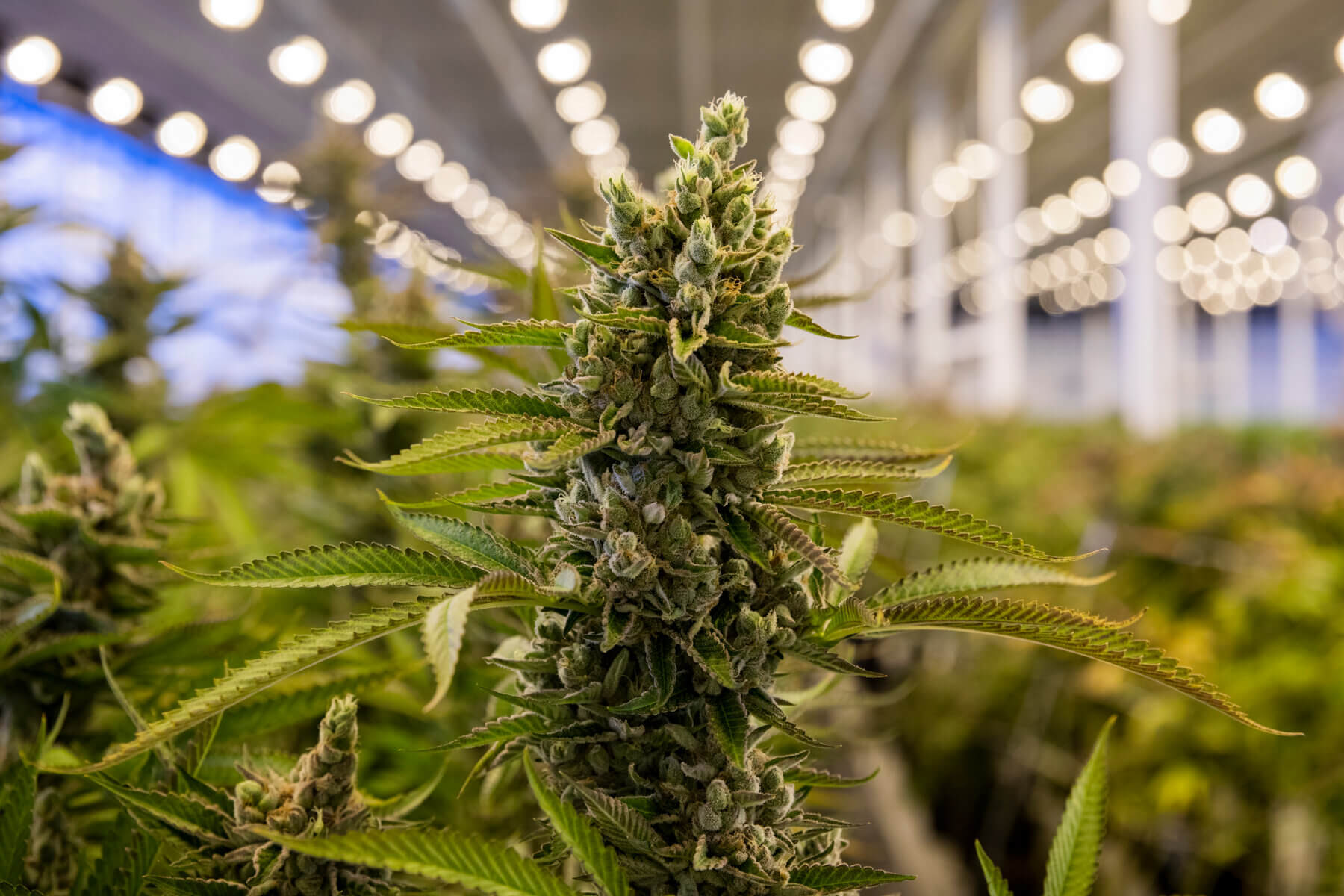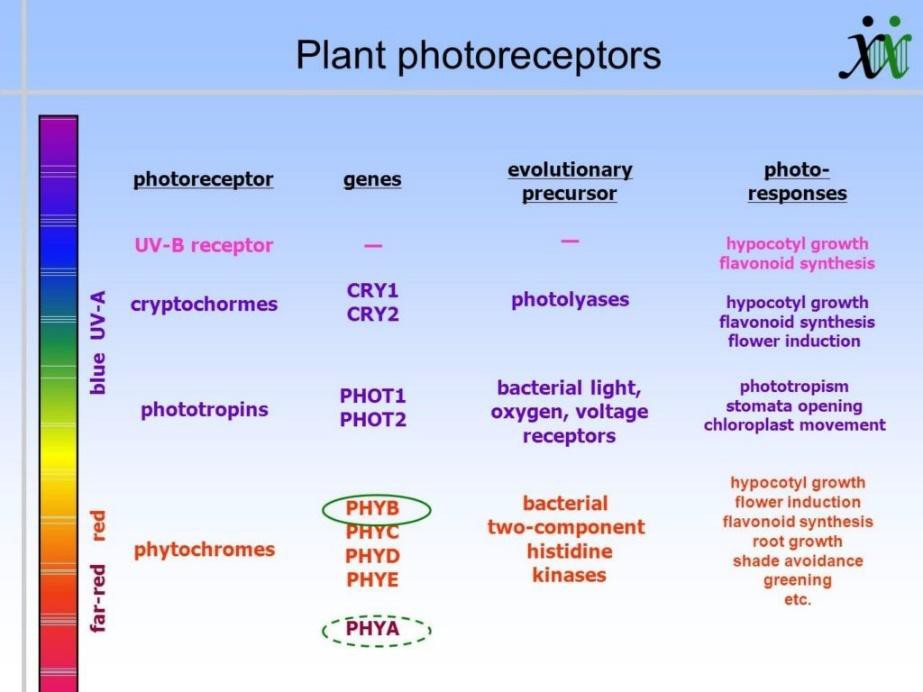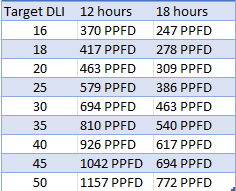
How can you determine what LED lighting is the perfect match for your grow (and is worth your money)? A practical starting place is to understand your photosynthetic photon flux density (PPFD) and how it informs daily light integral (DLI). Using these measurements to your advantage ensures your plants receive the “feed” they need to grow. These measurements can be complicated, so let’s break it down in about five minutes so you have exactly how many fixtures you need to grow.
What Is PPFD?
There are a handful of metrics and terms that are useful in guiding your lighting decisions and harnessing the power of light to optimize your grow. To understand PPFD, we have to explore the relationship between plants and light.
- Photosynthetically active radiation (PAR) describes the wavelengths of light between 400-700 nm (the visible range) used by plants for photosynthesis.
- Plant biologically active radiation (PBAR) includes PAR, but is a more expansive description of wavelengths, inclusive of non-visible spectrum.
- Photosynthetic photon flux (PPF) measures the amount of PAR an LED lighting system can produce per second.
- PPFD builds on PPF by measuring how many PAR photons actually reach the plant from the light source.
While PBAR covers a much broader spectrum than traditional PAR, plants absorb radiation mostly in the 400-700 nm range and use those photons to convert CO₂ uptake and water into oxygen and sugars (AKA photosynthesis).
The amount of absorption in each wavelength depends on the cellular structure of the plant and may differ from species to species somewhat, with various photoreceptors specializing in specific wavelength absorptions. From chloroplast to phytochrome, each has its own light cravings.
Providing the right intensity for photosynthesis (chloroplast feed) without the far red your phytochromes (photoperiod regulation) need to regulate days won’t produce the desired outcomes!

PAR and PBAR are vital in understanding how your plants interact with and utilize light to grow. If PAR and PBAR describe what your plants need to grow, then think of PPF and PPFD as how you meet their needs with supplemental lighting. PPF and PPFD are metrics that measure how effectively your fixtures are delivering the desired light spectrum to your plants. Next, we’ll add DLI to the mix, which completes the picture by adding exposure time.
The growth you want = what type of light your plants need to grow + how to deliver that light + how long to keep the lights turned on.
Using PPFD to Calculate DLI
It is important for all growers to really understand the DLI, which is the total number of photons landing per square meter in one day (mol/m²d). Each plant species has a specific DLI requirement for optimal growth, AND a specific photoperiod (hours of light) to gobble up those photons. For Cannabis Growers, a “day” isn’t 24 hours, so we have to do some simple math to calculate our DLI and set the appropriate PPFD target to nail it.
The straightforward relationship between PPFD and DLI is expressed in this handy equation:
DLI = PPFD x light hours per day x (3600/1,000,000)
If math isn’t your specialty, you can enter your target DLI and photoperiod here and get a Magic 8 Ball answer.
DLI to PPFD Calculator
Enter the DLI target in mol/m²/d:
Enter the photoperiod of your crop:
A natural trade-off between PPFD and photoperiod is needed to reach specific DLI values.

If you are growing in a greenhouse environment, you have to deduct the natural light available from your DLI target to get your required supplemental lighting requirement. You can use the CABA DLI Detective, our NASA-powered tool, to run the numbers for you. We take the guesswork and calculators off the table and provide you with real transparent numbers.
Determine How Many LED Lights Your Plants Need
Taking into account the DLI, PPFD, and number of light hours per day, you can calculate the total number of fixtures required in a greenhouse to illuminate the crops.
Here are the “rule of thumb” numbers to consider based on your crop type to help you set your DLI targets:
Greenhouse
- Vegetative Growth (Leafy Greens/Herbs): minimum 17 mol/m²/d
- Flowering Crops (Peppers/Tomatoes): 20-40 mol/m²/d
Indoors
- Microgreens: 6-12 mol/m²/d
- Vegetative Growth (Leafy Greens/Herbs): 12-17 mol/m²/d
- Flowering Crops: 15-40 mol/m²/d

Since the majority of CABA’s customers are cultivators of the happy weed, we have provided you with some industry standards that you can rely on for your garden in the above chart. Look for more info coming on max PPFD values and why more is not always better.
While PPFD is an important measure to guide your lighting purchases, it’s not the whole story; improving your yields requires understanding the science (measurements) and the context (grow environment). Check out our Environmental Audit to optimize your growing environment beyond PPFD and DLI measurements.
Have other lighting questions? Email us at info@cabatech.com, and we’ll be in touch within 24 hours.
(i) https://www.energybot.com/electricity-rates-by-state.html
(ii) 300 1000W DE HPS lights drawing 1080W each, running 4380 hours per year @ kWh national average cost of $0.143
(iii) https://mcusercontent.com/95bdd5f30210b401ea767d1d5/files/ae85f609-d600-4ad0-adfb- a1960870ab97/LED_CEC_REPORT.pdf
(iv) 436 Gavita Pro 1000DE HPS grow lights replaced with 436 CT141600UXST10U in Plymouth, MA. Cost per Kilowatt-hour reported at $0.24
(v) CABATech, LLC Supplemental Greenhouse Calculator and SunTracker.com DLI data used to create this model
(vi) https://www.epa.gov/energy/greenhouse-gas-equivalencies-calculator